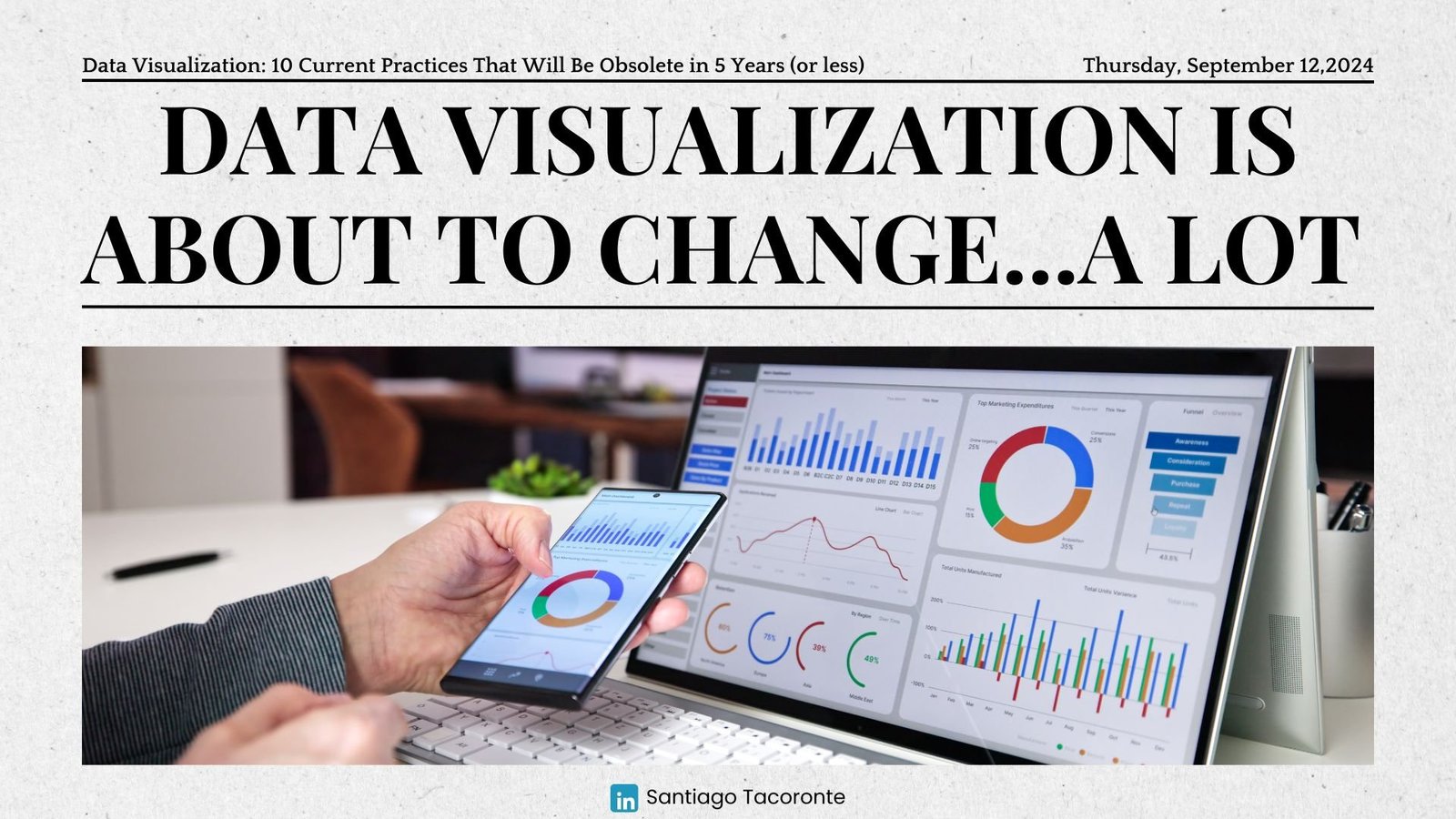The world of data visualization is evolving rapidly. What seems cutting-edge today may be obsolete tomorrow. Let’s explore ten current data visualization practices that will likely become outdated within the next five years or less.
+95% of Predictions Fail
Sign up below, and I will send you this presentation in 5 years. I bet I will be at least 50% right 🙂
Your subscription could not be saved. Please try again.
Your subscription has been successful.
1. Static Dashboard Filters
Say goodbye to static filters on dashboards. AI-driven contextual filtering will become the norm, highlighting relevant data based on user prompts, behavior, and preferences. This shift will make data exploration more intuitive and personalized.
2. One-Size-Fits-All Visualizations
The era of generic dashboards is ending. Adaptive interfaces will personalize charts and graphs for individual users’ cognitive styles and preferences. Expect to see dashboards that automatically adjust to your unique way of processing information.
3. Expert-Only Tools
Data visualization creation will no longer be the domain of experts alone. Natural language interfaces will make it accessible to everyone, democratizing the ability to create insightful visual representations of data.
4. Code-Heavy Custom Visualizations
The days of needing extensive coding knowledge to create advanced visualizations are numbered. No-code and low-code platforms will dominate, making sophisticated data visualization accessible to non-programmers.
5. 2D Visualizations
While 2D charts aren’t going away entirely, they’ll take a backseat to more immersive experiences. Expect 3D and AR/VR visualizations to become the norm for complex data exploration, offering new ways to interact with and understand information.
6. Screen-Bound Visualizations
Data visualization will break free from the confines of screens. Projections onto real-world objects and environments will become common, integrating data representation seamlessly into our physical surroundings.
7. Mouse-Based Interactions
Traditional mouse-based interactions with dashboards will feel outdated. Voice commands and touch/gesture controls will become the primary ways to interact with data visualizations, offering a more natural and intuitive experience.
8. Fixed Color Palettes
Static, predefined color schemes will give way to AI-generated palettes. These dynamic color schemes will be optimized for individual user perception, accessibility needs, and emotional impact, enhancing the effectiveness of data communication.
9. Standalone Visualizations
Isolated data visualizations will become less common. Instead, embedded analytics will integrate visualizations directly into everyday applications and workflows, making data-driven insights an seamless part of various processes.
10. Data Without Context
Raw data visualizations without explanations will become a thing of the past. Natural language generation will provide concise, contextual explanations of data trends directly within visualizations, making it easier for users to understand the significance of what they’re seeing.
As we move towards 2029, these changes will reshape how we create, interact with, and understand data visualizations. The future of data viz is more accessible, intuitive, and deeply integrated into our daily lives and work processes.





